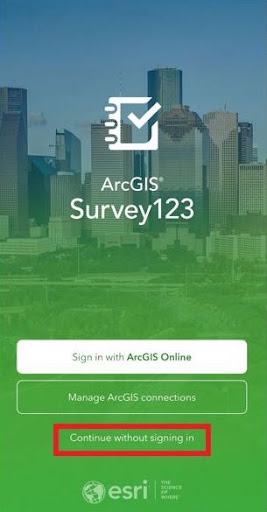National Lake Blitz
Frequently Asked Questions

Find the answer to your question below
Do you have a question that isn’t included here? Email us at lakeblitz@livinglakescanada.ca.
Being a volunteer
A: Absolutely! The National Lake Blitz is specifically designed for individuals without prior experience in lake monitoring. We’ll provide you with training, a field guide, and our contact information to ensure any questions you may have are answered. It’s a user-friendly program meant to welcome everyone, regardless of their background or expertise!
A: As a Lake Blitz volunteer, you’ll join hundreds of volunteers across Canada dedicated to monitoring lakes, learning about climate impacts, and contributing to a national database. You gain access to educational resources, receive invites to our Lake Blitz Summer Speaker Series and have chances to win prizes throughout the season.
A: Based on the 2023 Lake Blitz survey, most volunteers reported spending between five and thirty minutes on their monitoring activities, which includes commute time to their lake. Please note that commuting time may vary depending on your chosen lake. We recommend bi-weekly samplings and encourage volunteers to maintain a consistent schedule.
A: As a volunteer, you will gather various information, including air and water temperature, weather conditions, environmental concerns, and photos of shoreline habitat, wildlife, and invasive species. For those of you monitoring lakes in northern climates or higher elevations, you will also let us know if there is ice on your lake. This is an important indicator of climate change impacts on lake freeze-thaw cycles.
Volunteers receive a free Lake Blitz Kit containing a thermometer, field guide, data cards, and a pencil. Watch the how-to-monitor videos for kids or adults for easy tips on data collection in-the-field.
A: We completely understand if your situation changes. If you are no longer able or wish to participate regularly in the Lake Blitz program, please complete the Lake Blitz Kit Return Form. You can use the return envelope provided, or, mail it back to us through oversized letter mail to #202A 330 Baker Street, Nelson BC V1L 4H5. It will cost around $4. By returning your kit, you help us equip another volunteer. Thank you!
If you want to participate next year, please hold onto your kit.
A: There’s so many ways to get involved!
- Attend our events throughout the season, such as our virtual volunteer meetups and Summer Speaker Series.
- Join our Facebook group, where we regularly share photos, tips, and information
Contribute to our iNaturalist group.
Monitoring
A: We recommend following the monitoring calendar provided, as you will receive timely reminder emails and updates on your monitoring progress. However, this isn’t a requirement! Feel free to monitor on your own schedule, as long as it’s consistent and throughout the summer.
A: Opt for a consistent time when collecting data as air and water temperatures fluctuate throughout the day. The prime monitoring hours for a lake fall between 10 am to 2 pm.
A: No worries! If you miss a weekend, please catch up as soon as you can. Your volunteer calendar has some alternative days you can monitor on to keep you in the flow. For lakes without ice, monitoring can extend into October to meet the 10 sampling days per year requirement if you can’t complete all the days each month. Consistent and frequent monitoring is key to gaining an in-depth understanding of your local lake and tracking changes over time.
If you anticipate missing a monitoring weekend, consider forming a team with friends, family, neighbours, or coworkers and coordinate your monitoring efforts to collect a full dataset. Contact the Lake Blitz team (lakeblitz@livinglakescanada.ca) if you need assistance finding someone to cover your weekend. We might know of volunteers nearby who can visit your lake!
A: Freshwater ecosystems, with lakes representing just 1% of the Earth’s surface, host 10% of the world’s biodiversity (WWF Canada). However, human impacts such as development, pollution, and climate change threaten these vital ecosystems. Volunteer monitoring efforts can help us understand how lakes may change over time and identify areas of concern for conservation action. Long-term observations not only provide valuable information but also demonstrate growing community concern and awareness of threats faced by lake biodiversity, and showcases volunteer commitment to protecting lakes.
A: You can identify wildlife species no matter your experience level! Many digital apps are available to help you identify species based on your photos, including:
- Google Lens (built into Android)
- Lookup (on iOS)
- Merlin Bird ID (great option for bird identification)
- iNaturalist (includes flora and fauna identification)
Did you know that we have an iNaturalist group? In addition to collecting lake data, you can contribute to our national collection of wildlife observations! Click here and join today.
A: If you see an invasive species that requires immediate attention, please send a photo to lakeblitz@livinglakescanada.ca. For all priority species, such as zebra mussels or quagga mussels, please call the reporting hotline in your province or territory. You can find a list of numbers to call in the Field Guide on page 23.
Kits and equipment
A: Contact lakeblitz@livinglakescanada.ca and we will send you another kit.
A: We encourage volunteers to hang onto their kits for next year’s participation! If you don’t plan to use the kit again, consider inspiring a friend to join as a lake monitor and pass it along. Alternatively, you can return the kit using the pre-stamped envelope included in your original package to Living Lakes Canada’s office at #202A 330 Baker Street, Nelson, BC, V1L 4H5. Please fill out the kit return form and include your name when returning the kit so we can identify the sender.
Submitting data
 A: To record your observations, use the Lake Blitz Observation Form, accessible via computer or smartphone using Survey123. The app is free, and no account is required—just select “Continue without signing in”(see image below). Connect the form, save it for future use, and input data right from your local lake. You can also use the data cards in your Lake Blitz Kkit and upload them using the desktop version when you’re back home. It’s that easy! See our how-to videos on how to enter data and how to use the observation map.
A: To record your observations, use the Lake Blitz Observation Form, accessible via computer or smartphone using Survey123. The app is free, and no account is required—just select “Continue without signing in”(see image below). Connect the form, save it for future use, and input data right from your local lake. You can also use the data cards in your Lake Blitz Kkit and upload them using the desktop version when you’re back home. It’s that easy! See our how-to videos on how to enter data and how to use the observation map.
The data will contribute to building a national lake database, showcasing the collective efforts of volunteers across Canada.
A: Please note that you cannot change the location using the Survey 123 app. Your location will be set wherever you upload your data.
First, access the Lake Blitz Observation Form at lakeblitz.livinglakescanada.ca on your mobile or desktop browser to change the location. Click on “SUBMIT YOUR MONITORING RESULTS” and select “Open in browser.” The blue location cursor can now be moved. Select OK in the top right corner to save the new location.
If you’re having trouble changing the location, please send us an email to lakeblitz@livinglakescanada.ca with your name, lake, monitoring date, and GPS coordinates, and a member of our team will be able to change the location manually for you.
A: This is likely because the entry exceeded the photo limits on the form. Each photo entry section has a maximum photo entry of 4 lake photos, 6 wildlife photos, 3 invasive species photos, and 6 issues and concerns photos. Limits are placed on photo uploads because of the need to save storage space in our database. Only post your best photos that show the most information!

